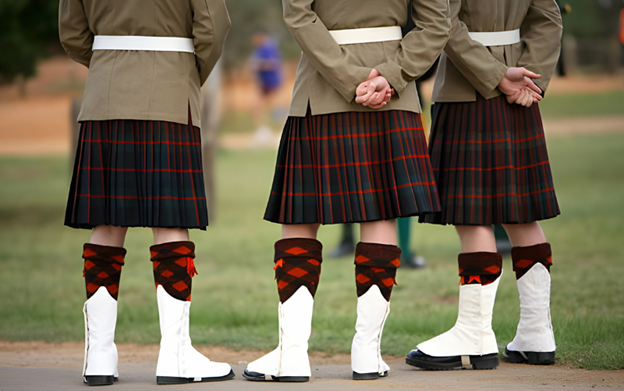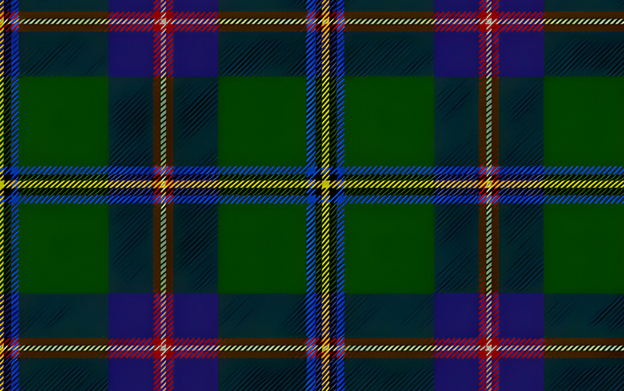Tartans, woven into the fabric of Scottish culture, are more than just patterns; they are storytellers. Among the diverse clan tartans, the Buchanan Tartan stands out with its unique design and profound symbolism. Let’s embark on a journey to unravel the captivating tale behind the Buchanan Tartan, exploring its historical roots, distinctive features, and the impact it has had on contemporary culture.
Tartans, synonymous with Scottish heritage, serve as visual symbols of clan identity and historical narratives. The Buchanan Tartan, in particular, holds a special place in this rich tapestry. In this article, we will delve into the historical roots, distinctive features, and the symbolic significance of Buchanan Tartan, discovering why it continues to be a cherished emblem for those with Buchanan lineage.
Historical Roots of Buchanan Tartan
The Buchanan Tartan is not just a pattern; it is a reflection of the Buchanan clan’s historical journey. Originating in medieval times, the clan’s roots intertwine with the evolution of tartan patterns in Scottish history. The Buchanan Tartan, therefore, becomes a visual representation of the clan’s resilience and enduring legacy.
Distinctive Features of Buchanan Tartan
Buchanan Tartan distinguishes itself through a careful combination of colors and a unique pattern layout. The interplay of green, yellow, red, and white creates a visual feast for the eyes. The distinctive crisscrossing lines and squares make Buchanan Tartan instantly recognizable, setting it apart from other tartans.
Symbolism Embedded in the Design
Colors within the Buchanan Tartan are not merely aesthetic choices; they carry profound symbolism. The rich green symbolizes the clan’s connection to the land, while yellow signifies generosity. Red embodies the spirit of valor and courage, and white represents purity and integrity. By understanding these symbols, one gains insight into the deep-rooted values of the Buchanan clan.
Evolution Over Time
As with any cultural symbol, the Buchanan Tartan has evolved over time. While its core design remains intact, subtle changes reflect societal shifts. Modern adaptations ensure that Buchanan Tartan remains relevant, connecting the past with the present and adapting to contemporary tastes without losing its traditional essence.
Buchanan Tartan in Popular Culture
Beyond clan gatherings and traditional events, Buchanan Tartan has found its way into popular culture. From its presence in movies and literature to its adoption by fashion designers, the tartan has become a global symbol of Scottish heritage. Its distinctive design adds a touch of authenticity to various forms of creative expression.
Craftsmanship and Production
Crafting Buchanan Tartan involves a meticulous process that combines traditional craftsmanship with modern techniques. The tartan is woven with precision, maintaining the authenticity of its design. This dedication to craftsmanship ensures that each piece carries the essence of Buchanan heritage.
Fashion and Lifestyle
Buchanan Tartan is not confined to historical reenactments; it has seamlessly integrated into modern fashion. From traditional kilts to contemporary scarves, the tartan has become a versatile fashion statement. Embracing Buchanan Tartan isn’t just about style; it’s a way of expressing pride in one’s heritage.

Controversies and Misconceptions
As with any iconic symbol, Buchanan Tartan has faced controversies and misconceptions. Addressing these concerns is crucial in preserving the authenticity of the tartan’s design and its cultural significance. By dispelling myths, we ensure that the true story behind Buchanan Tartan is accurately portrayed.
Buchanan Tartan: A Symbol of Identity
For individuals with Buchanan heritage, wearing the tartan goes beyond fashion; it’s a symbol of identity. The tartan becomes a tangible link to ancestral roots, evoking a sense of pride and connection. It serves as a powerful emblem, allowing individuals to carry their heritage with them.
Impact on Tourism
The allure of Buchanan Tartan extends far beyond Scotland’s borders. Tourists, drawn to the rich tapestry of Scottish heritage, find the tartan to be a captivating symbol. Buchanan Tartan plays a significant role in attracting visitors, contributing to the cultural and economic impact of Scottish tourism.
Celebrating Buchanan Tartan Day
Buchanan Tartan Day is a momentous occasion dedicated to celebrating heritage and identity. Originating from a desire to honor the clan, the day is marked with festivities, events, and a sense of camaraderie. Encouraging active participation ensures that the legacy of Buchanan Tartan is joyously celebrated.
The timeless allure of Buchanan Tartan serves as a wellspring of inspiration for contemporary designers. The pattern’s adaptability and aesthetic appeal have led to collaborations and innovations in design. Buchanan Tartan continues to influence the fashion landscape, bridging the gap between tradition and modernity.
Maintaining the Legacy
Preserving the legacy of Buchanan Tartan requires concerted efforts from communities and organizations. Initiatives aimed at educating the younger generation about the tartan’s significance ensure that the cultural heritage remains alive and thriving.
Conclusion
In conclusion, the Buchanan Tartan’s distinctive design is more than a visual delight; it’s a narrative woven into the very fabric of Scottish history. Its evolution, symbolism, and impact on contemporary culture make it a timeless emblem. By understanding the story behind Buchanan Tartan, we not only honor the past but also contribute to its vibrant future.
FAQs
How did the Buchanan Tartan originate?
The Buchanan Tartan has its roots in the medieval period, representing the Buchanan clan’s historical journey. Its design reflects the evolution of tartan patterns in Scottish history.
What do the colors in Buchanan Tartan symbolize?
The green signifies the clan’s connection to the land, yellow represents generosity, red embodies valor, and courage, while white symbolizes purity and integrity.
How has Buchanan Tartan evolved over time?
While maintaining its core design, Buchanan Tartan has adapted to modern tastes, ensuring its relevance. Subtle changes reflect societal shifts while preserving its traditional essence.
Is Buchanan Tartan only worn on special occasions?
No, Buchanan Tartan has seamlessly integrated into modern fashion. From kilts to scarves, it is embraced as a versatile fashion statement, not limited to traditional events.
What initiatives are in place to preserve the legacy of Buchanan Tartan?
Various community and organizational efforts focus on educating the younger generation about the tartan’s significance, ensuring its cultural heritage remains vibrant and alive.




Leave a reply